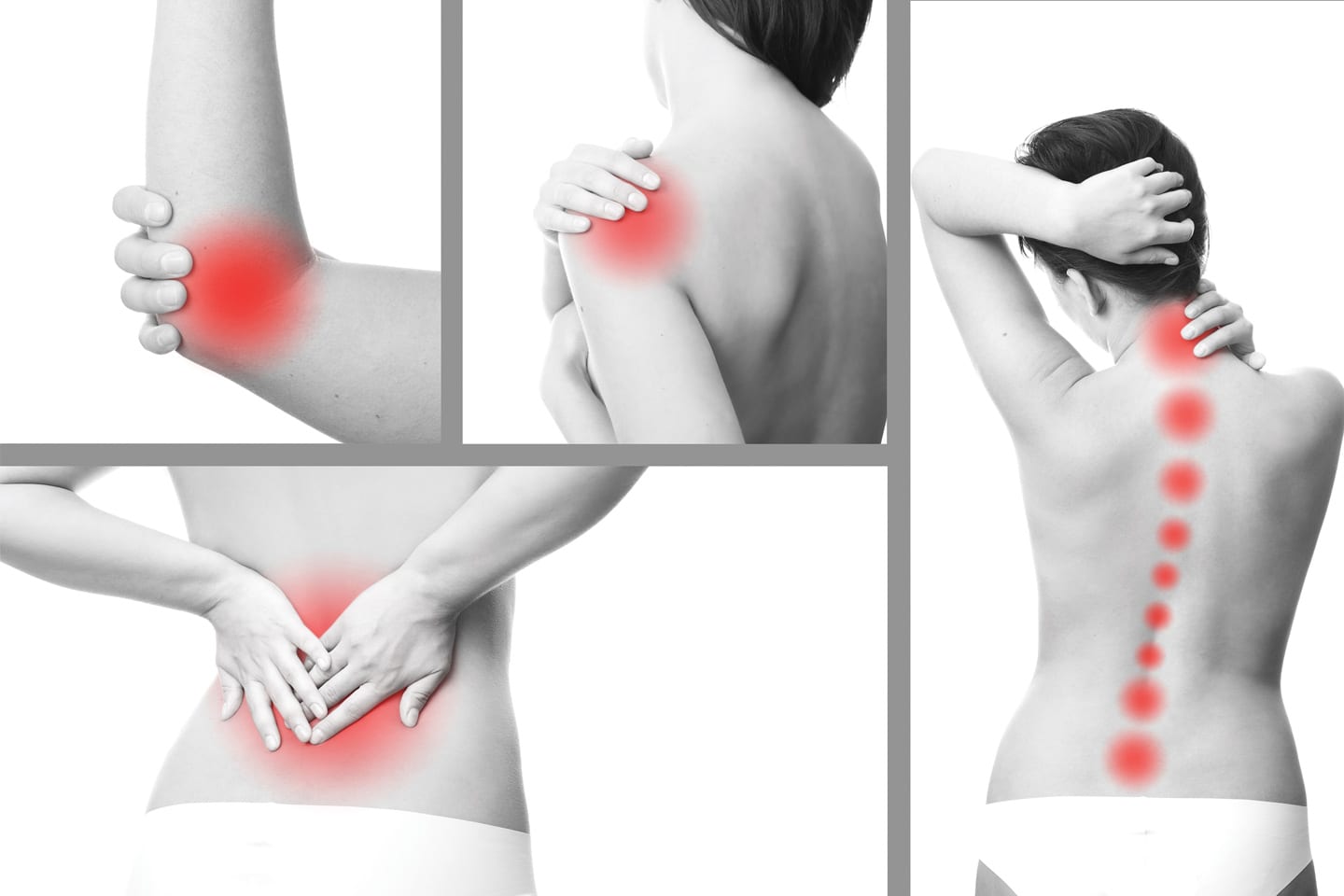Chronic Pain Management
Pain is the body’s tool to communicate to us that something is wrong.
By Charlotte Boatwright, R.N., PH.D.
After colds and upper respiratory infections, pain is the second most frequent reason for physician visits. One in four Americans, 76.5 million people, live with moderate to severe chronic pain for which they need to seek a doctor’s care. According to the National Center for Health Statistics (2006), individuals aged 45-64 were most likely to report lasting pain, while young adults 20-44 were next in line. Adults aged 65 and older were least likely to report.
Chronic pain may occur for no known reason, or the cause may not be well defined. Nerves may be damaged or body chemicals that normally relieve pain as healing occurs after illness or injury may not be functioning effectively. Acute pain is normal and is stimulated in the nervous system to notify us of possible injury, while chronic pain persists. Pain triggers may continue for weeks, months, or years. Injury or illness may have caused the initial trigger, but some people experience pain in the absence of any known bodily damage.
Pain lasting over three months is chronic, and even after two months, it is important to seek treatment in order to prevent the pain from growing worse. The pain may vary from mild to severe and be described as soreness, stiffness, burning, aching, or shooting. Mild to severe pain can sometimes be managed at home through exercise, massage, good nutrition, and over-the-counter pain relievers such as acetaminophen, aspirin, ibuprofen, or nonsteroidal anti-inflammatory medications (NSAIDs). But intractable pain may become exhausting and depressing. The person’s attitude toward life may change and their relationships may be stressed. Constant pain can cause restrictions on daily activities and lead to permanent disability. The lives of family members and caregivers are affected, and they may need support. The sufferer may experience a cycle of sleeplessness, irritability, immobilization, and depression leading to more pain. When pain is disabling, the individual may seek evaluation in a pain management facility where a team of health professionals develops a plan to treat and manage the pain.
Who is at risk for chronic pain?
Many chronic conditions, such as back and knee pain, cancer, or arthritis, affect older adults, but chronic pain is not a normal part of aging. Some patients suffer from psychogenic pain that is not due to any known disease or injury. Though more common in aging, anyone can have chronic pain, and it can occur anywhere in the body. It may come back again and again when healing should have been complete. For example, amputees often feel phantom limb pain in the missing extremity for months or years.
Dr. Roger Catlin with the Chattanooga Center for Pain Management says his patients are usually between ages 45 and 70 years and about 70 percent have back problems. “That doesn’t mean that those are the only patients who need pain management, but those are the ones who get to me,” he notes. Many patients do not see pain management specialists because of a lack of referral from the primary care physician. “They often do not know what conditions merit referral, such as acute shingles, post-herpetic neuralgia, diabetic neuropathy, compression fractures, osteoporosis, and arthritis. A second barrier is money. Rising gasoline costs make travel expensive, and patients often have to travel to get treatment.”
Other problems increasing risk include smoking. Nicotine can increase pain and reduce effectiveness of medications. Conditions like fibromyalgia, joint injuries, a weakened immune system, or unhealthy lifestyles may contribute to chronic pain. Lack of exercise, substance abuse, or medication dependency may also increase risks.
How is Chronic Pain Diagnosed?
As with any other medical condition, a detailed medical history and physical assessment are first steps in treating pain patients. “I encourage patients to bring someone with them to listen and retain information,” Catlin explains. “I also encourage them to bring a tape recorder. The patient without medical knowledge may absorb only a little of the information given. They need to write down information to take with them,” he says. “We determine what studies will be needed. Patients usually do not come to me with a diagnosis. Patients who come with specific descriptions of the pain can help to shorten the process of identifying the pain source.”
A neurological exam and mental health assessment may be done to evaluate nerve involvement, mental and emotional functioning, and problems such as insomnia, stress, or depression. Electromyogram and nerve conduction studies are done to evaluate muscle and nerve function. Blood or other laboratory tests may be used to rule out conditions that lead to chronic pain. Angiogram and other vascular studies are used to measure blood flow. Other possible tests include ultrasound, CT scan, or MRI. Nerve blocks, done with injection of local anesthetic around a nerve or joint, help determine if it is the cause of pain. “If a particular joint is painful, the best way to demonstrate if it is the cause or not is to make it numb. If the pain is not gone, that joint is not the cause; it is something else,” Catlin comments.
Treatment of Chronic Pain
“Persistent pain is very human and can occur at any age,” says Thomas Miller, M.D., Director of Specialists in Pain Management at Memorial Hospital. “Chronic pain continues long after healing should have occurred. Probably 50 to 60 percent of the pain seen in pain centers is spinal pain, with osteoarthritis in the mix; then cancer pain is next. If you only have a month or two to live and you want your quality of life, why wouldn’t you want to use everything at hand to treat the pain? A lot of the science of pain management comes from cancer pain literature,” Dr. Miller adds.
“Treatment for pain should be individualized for each patient,” Miller explains. “You must use the proper treatment modalities for that patient. Sometimes the physical modalities are more important; sometimes the psychological ones are more needed. There is a chemical basis for pain. We know that continuous bombardment with pain changes body chemicals. Pain management involves a broad combination of considerations to determine modalities that can best improve quality of life. We are all caught up in this country with fears about people abusing pain medication. The right pain medication in the right place with appropriate monitoring can be a wonderful miracle for people with pain and suffering,” he adds. Medications need to be evaluated and adjusted to achieve the best results and should always be taken as prescribed.
The goals of treatment should be to improve functioning and reduce pain. Pain may not be totally relieved, but may be managed in order to improve comfort and quality of life. Specific conditions such as headaches, arthritis, back pain, or depression may see rapid improvement. Treatment may be challenging for other problems as the source of pain may be unclear. Several attempts at combining treatments may be required before success is achieved. Pain could increase initially because chronic pain may have led to inactivity with loss of strength and flexibility.
Patients can improve their response to treatment by doing appropriate exercises, eating well, and getting enough sleep. A licensed mental health professional may significantly improve pain management by treating anxiety, anger, fear, or depression. Relaxation techniques, guided imagery, and yoga are used to reduce stress. Physical therapy can help to restore strength and function and to relieve pain from inactivity. Electrical stimulation therapies, such as transcutaneous electrical nerve stimulation (tens) may be prescribed to alter pain signals on the way to the brain. Treatments vary in their effectiveness and may not work the same for everyone.
Ocassionally, complementary therapeutic approaches to treatment are used, such as acupuncture, meditation, massage, physical therapy, or yoga. “I believe that East meets West with acupuncture. There are many people studying how it works and fits with Western medicine. Doctors need to be incorporating some of the alternative therapies into their practices,” Miller remarks.
Millions of people suffer chronic pain, and the health care costs, as well as emotional and financial burdens on families for management and rehabilitation, are great. Unrelieved pain can lead to disability, loss of productivity, or inability to work. The cost of pain to employers is estimated to be around $100 billion annually. To improve the quality of life for those who live with chronic pain, pain management can be the solution.
Charlotte Boatwright is a native Chattanoogan. She has a doctorate in health care administration, is a registered nurse and licensed professional counselor. Charlotte has been involved with health care for 35 + years and is the founding member and President of The Coalition Against Domestic & Community Violence of Greater Chattanooga, Inc. / Chattanooga Family Justice Alliance. She can be reached at cboatwright@comcast.net
See Related Articles






